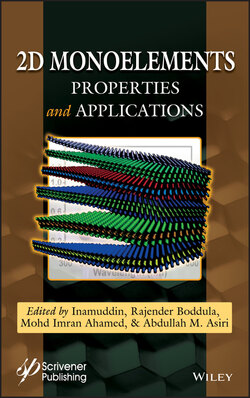Читать книгу 2D Monoelements - Группа авторов - Страница 19
1.2.2.2 Optical Properties
ОглавлениеThe puckered structure of phosphorene attributes it interesting optical properties. Phosphorene absorbs transverse radiation along its AC-axis, while it highly transmitted light along ZZ-axis [19, 52]. The photoluminescence excitation spectroscopy (PLE) measures an optical band gap of 1.31 eV owing to the exciton binding energy as discussed in [19, 49] and measured in [53]. Notice that the theoretical values are larger than the measured amounts because of the increased screening from the dielectric substrate that reduces the quasi-particle band gap and consequently the exciton binding energy [54]. Furthermore, phosphorene can absorbs the visible light since its optical absorption peak is located at 1.6 eV. All these features suggest phosphorene as a promising optoelectronic device for future applications.
The absorption peak can be tunable via strain as displayed in Figure 1.3. For deformed phosphorene, the absorption peak ranges from 0.38 to 2.07 eV under compressive and tensile strain revealing that the material absorbs both infrared and visible light. For the electric field vector E⊥, the graph displaying the imaginary part of the dielectric function E2(ω) shows a considerable shift of the first peak towards high energies when including quasi-particle corrections. However, the shape of E2(ω) spectrum changes considerably when taking into account the electron-hole correlations (BSE) [19]. The exciton binding energy is 0.818 eV for the first active one and 0.66 eV for the first dark one. As displayed in Figures 1.4a and b, the dielectric screening enlarges both the gap and binding energy at ω = 0. Furthermore, a large excitonic wave function distribution is observed for the first bright exciton in Figure 1.4c whose peak emerges in the IR part as shown in Figure 1.4d. The maximum reflectivity Rmax(ω) of 38% occurs in the IR range while it did not exceed 22% for the visible light (see Figure 1.4e). The electron energy loss spectra in Figure 1.4f reveal that the first plasmon peaks in phosphorene sheet has a height of 11.003 dispersed in the IR range of the spectrum.
Figure 1.3 Absorption spectra for undeformed monolayer phosphorene with 0% strain and deformed mono-layer under compressive –8%, –6%, and –4% and tensile strain of 4% and 5.5%. The curves are obtained through the GW+BSE method.
Figure 1.4 (a) and (b) dielectric function, (c) absorption coefficient, (d) reflectivity function, and (e) EELs function, obtained by using three approximations GW-BSE, GW-RPA, and GGA-RPA. (f) Represents the wave function of electron-hole.
In phosphorene multi-layers, the photoluminescence depends significantly on N. The first absorption peak is shifting to lower energies with increasing N. Consequently, the optical absorption coefficient ranges in the interval [0.3–1.2] eV [19], which means that the absorption radiation spectrum include IR and part of visible [52].
